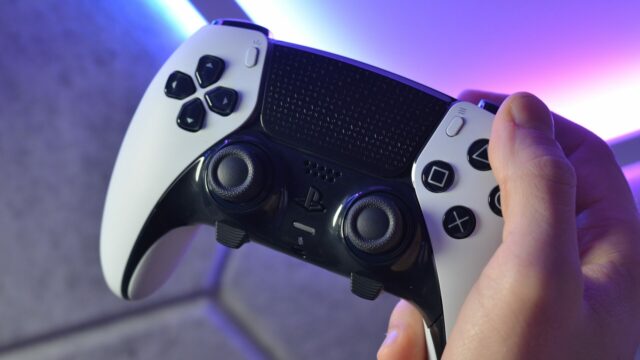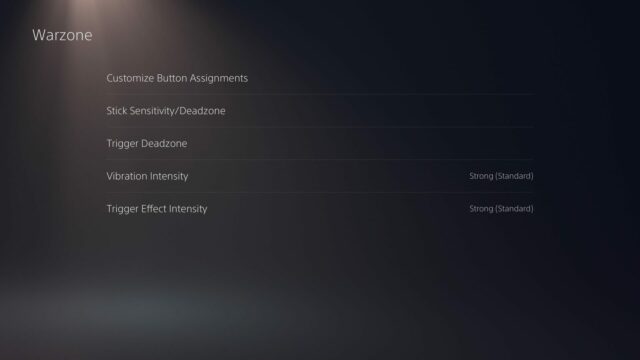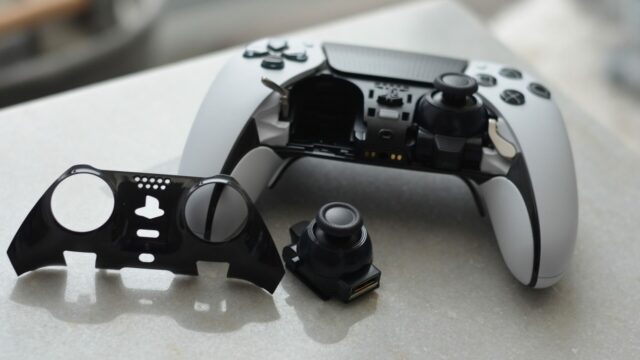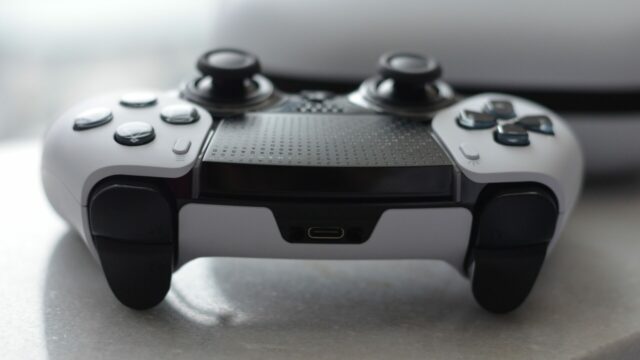
PlayStation 5 DualSense Edge Review

Since the advent of the PlayStation 5, I’ve been impressed with Sony’s new DualSense controller. It’s quickly entered the upper echelon of controllers as far as I’m concerned. Bringing haptics and adaptive triggers and leveraging comfort, the DualSense really elevated my experience in the PlayStation ecosystem.
However, I’ve also long been a proponent of the idea that Sony should develop its own pro-level controller. One that builds on the original, introduces customizable features and is developed in-house rather than leaning on third-party support. In comes the DualSense Edge Wireless Controller.
The new DualSense Edge builds off the already outstanding foundation laid by Sony’s engineering team. It incorporates some much-needed customization options and additional features while offering a slightly refined design. The end result is a clear-cut premium controller. One that players can fine-tune to their playstyle and the type of game they are enjoying.
However, even with all these benefits, there are two major factors to consider –– budget and battery life. With a $269.99 price tag in Canada (nearly half of a PlayStation 5) and shorter battery life, one must weigh those pros and cons when considering whether or not to make a satisfactory purchase.
Out of the box
Just based on the heft of the DualSense Edge packaging, I could glean a sense of what to expect. The DualSense Edge comes with a very strong protective case made of hard plastic. The case itself contains the DualSense Edge as well as a variety of accessories to play around with. If you’re familiar with Xbox’s Elite Wireless Controller Series 2, you probably have a good idea of what to expect when unboxing your own DualSense Edge.
In addition to the DualSense Edge controller, the carrying case includes a USB-C braided cable, two standard thumbstick caps, two “high dome” caps, two “low dome” caps, two back paddle buttons, two “half dome” back buttons, and the connector housing unit. There isn’t really much more you could want right out of the box when it comes to a premium controller. Everything included has a purpose and goes a long way in personalizing your gaming experience.

Just by seeing the controller, the visual differences stand out to the eye. In comparison to its predecessor, the DualSense Edge offers a similar colour pallet to the original white controller. The face buttons are now black, which adds a nice bit of contrast while retaining the exact same feel. The touchpad is also black with a glossy finish rather than the matte finish. One nice design aspect is that across it, the iconic PlayStation symbols can be seen etched in. The DualSense lightbar is also slightly modified. Rather than running along all sides of the touchpad, the light bar exclusively runs on the side of the touchpad, refracting out at the ends slightly. It’s a more premium design choice that I personally am fond of.
The DualSense Edge also features slightly textured grips. It’s also worth noting that the controller weighs around 325 grams (standard DualSense is ~280 grams). While not necessarily uncomfortable, the increase in weight is certainly noticeable.

The area around the thumbsticks is also slightly glossy as the controller now features a removable plate –– more on that in a bit. Below each thumbstick is the new ‘Fn’ button, which offers access to the customization menu. On the back, the controller offers two stop sliders to adjust the pull of the adaptive triggers. Plus, the rear side offers two magnetic slots to fit the back buttons in securely. The nice part of the back buttons is that you can fix either two paddles, two half domes, or one of each. It’s been years since I’ve adapted to using back paddles thanks to the Xbox Elite Wireless Controller.
Having now tried the back buttons on the DualSense, I’m happy they feel responsive with satisfying clicks each time. Having sunk plenty of hours with the DualSense Edge, I do find myself more accustomed to the paddles over the half domes. The half-domes feel very foreign to me. They are unlike any back buttons I’ve used before. It may come down to the personal preference of the player but I believe the lever-style buttons integrate a bit better into the console.
Customization in a flash
After plugging the DualSense Edge into the PlayStation 5, I was quickly prompted to start creating my own custom profiles for the controller. The controller comes with a default profile option but it’s merely business as usual with all face buttons, triggers, etc. assigned to their standard layout. To really gain the benefits of the DualSense Edge, I began creating my own profiles based on the games I’m currently playing.
For instance, having Call of Duty: Warzone 2.0 in my weekly rotation, I created a profile based on my control preference. To avoid having to take my fingers off the thumbsticks to maximize movement, I assigned the game’s jump button to the right back button and the crouch/prone button to the left back button. However, it’s completely viable to instead assign lethal and tactical throws to the back button. Alternatively, the ping button could also be a good choice to use on the back button.

Along with competitive games, HBO’s The Last of Us had me craving a return to The Last of Us Part 2. Although Naughty Dog’s game does offer remappable controls, the back buttons added that extra layer of customization. Here, I found it beneficial to put the intact/grab button on the right back button and the game’s sprint function on the left. This made it so that Ellie’s movement and interactions with items could all be used while still keeping full control of the camera and the ability to aim and fire weapons.
This is really the tip of the iceberg when it comes to customizable controls and remapping buttons. There are endless excuses to customize and remap the controller’s button layout. Whether you’re an action/adventure fan jumping into Forspoken or a racing enthusiast hitting the tracks of Gran Turismo 7, the DualSense Edge makes it surprisingly easy to swap between profiles.

Holding down on the new Fn buttons brings up a quick menu where you can select each Custom Profile without having to leave a game or slog through menu screens. You can even name each profile to avoid confusion. You’re also able to override and create new profiles as much as you’d like. Although you’re limited to four assigned Custom Profiles at any given time, you can create as many unassigned profiles to customize and experiment with. The Fn button also provides the ability to quickly adjust headset and voice chat volume levels. However, keep in mind this feature appears to be exclusive to wired 3.5mm headphones. I haven’t had luck using it with any wireless option, including the Pulse 3D headset.
Outside of creating Custom Profiles, the DualSense Edge offers the ability to change and tweak stick sensitivity, dead zones for the thumbsticks and triggers, as well as the intensity of vibrations. Additionally, with the use of the stop sliders, there’s a faster response time when firing a weapon, which is a nice competitive perk. No pro-level controller is complete without this feature. There is the default no-stop option, mid-stop, and full-stop, which offers the least amount of travel when pulling the trigger.
What’s interesting to note is that some PlayStation 5 exclusive titles have used the DualSense’s adaptive triggers to introduce alt-fire modes. For instance, Returnal’s alternative firing option isn’t functional when the stop slider is used. It’s an understandable concession when two conflicting features all boil down to the use of that controller’s trigger.
A modular future
One very interesting element the DualSense Edge features is its removable stick modules. By removing the controller’s faceplate, both analog sticks can be removed and replaced if need be. The faceplate can be popped out by using a release slider on the rear of the controller. Thankfully, it’s nearly impossible to accidentally hit. Once the faceplate is removed, a study lever must be lifted to pop out each thumbstick module. Popping these modules out, users can then replace the thumbstick caps or the unit entity.

Of the included stick caps, the taller, convex caps will likely speak to competitive players of Call of Duty, Apex Legends, etc. These enable more precise movements. The shorter convex sticks are designed for more twitchy movements and aiming speeds. Both caps are made of a harder rubber material and seem to be made with durability in mind.
What remains to be seen is the longevity of the DualSense Edge’s thumbsticks. Much like any controller, stick drift worries always loom over us all. Here, Sony is going to be offering stick module replacements for $24.99. This is a nice option down the road in case something may happen or if an out-of-warranty issue comes up. Rather than shell out $269 for a new controller, this piece can be replaced. As of now, there aren’t any red flags suggesting that the sticks may diminish in quality within an unreasonable amount of time given.
Although I doubt Sony has any further plans for the immediate future, I enjoy the fact that a first-party modular controller exists. It opens the floodgates to further innovations and ideas. Plus, it breaks down the barrier and misconception that having modular devices are too overwhelming for many consumers.
Battery life may leave you wanting more
Over the course of the PlayStation 5’s lifecycle, the standard DualSense has been met with some light criticism over its ~10 hours of battery life. Sadly, the DualSense Edge has a battery life that is even shorter. Throughout my week of use, I’ve experienced an average of five hours prior to receiving the on-screen notification that the controller needs to be recharged. It’s hard not to compare the DualSense Edge’s battery with its direct competitor. The Xbox Elite Wireless Controller Series 2 offers upwards of 40 hours of playtime on a charge. Thus, there’s a far gap between the two.

So far, I’ve seen the DualSense Edge charge fully in a matter of 60-70 minutes. It’s not the worst if you’re done playing for the day or taking a break. Though, if this is your sole controller, the battery life could impact and interrupt your play sessions. Thankfully, if you’re in a pinch and in need of a recharge, the DualSense Edge’s braided USB-C cable comes in at a whopping 9 feet. It’s almost comically large but for those with larger entertainment spaces, I’m sure it’ll come in handy down the road.
When using the included connector housing unit, I’ve been able to connect the USB-C cord and lock it in firmly to my DualSense Edge. Not that I run the risk of it being pulled out. However, for those with dogs or kids, who may trip on the cord, the connector housing stops the cord from becoming detached during a charge.
Final thoughts
At its core, PlayStation is delivering on the promise of folding a pro-level controller into its ecosystem. The DualSense Edge not only further adopts everything we love about the original controller but does so while introducing new customization features built by Sony itself, avoiding third-party support. Without a shadow of a doubt, the new options from Custom Profiles and dead zone tweaking via the new Fn buttons and a clean and accessible user interface.
With the addition of back button options, stop-slide trigger options, and rear grips, the DualSense Edge opens up so many options outside of remapping. However, the only thing impacting the premium-priced controller is its battery life. With it leaving more to be desired, Sony continues to run into barriers thanks to its batteries. Sony’s introduction of a pro-level controller isn’t necessarily the must-buy accessory but it is worth the investment if you’re looking for a customization suite on PlayStation 5.
The DualSense Edge is available in Canada on January 26th.

